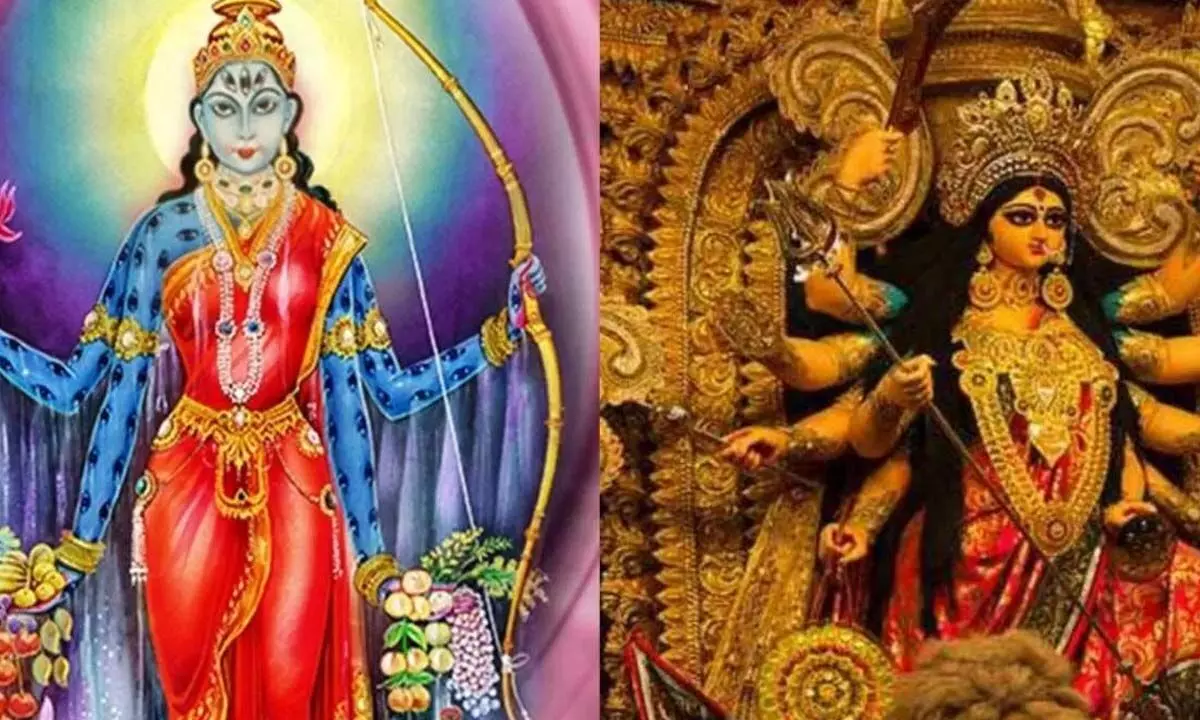Shakambhari Navratri 2024: When is it beginning and how do we celebrate; Know rituals, shubh muhurat and significance

Shakambhari Navratri, a festival dedicated to the worship of Maa Shakambhari, is an auspicious occasion celebrated with great fervour by Hindus.
Shakambhari Navratri, a festival dedicated to the worship of Maa Shakambhari, is an auspicious occasion celebrated with great fervour by Hindus. This unique Navratri, unlike the more commonly known Chaitra and Shardiya Navratri, begins on Paush Shukla Ashtami and concludes on Paush Purnima, spanning a duration of eight days. It holds special significance as devotees pay homage to Maa Shakambhari, the Goddess associated with vegetables, fruits, and greenery.
Shakambhari Navratri 2024 Dates and Muhurat
The festival is set to commence on Thursday, January 18, 2024, and conclude on Thursday, January 25, 2024, according to Drik Panchang. The Ashtami Tithi begins on January 17 at 10:06 pm and concludes on January 18 at 8:44 pm. Meanwhile, the Navratri Purnima Tithi will start on January 24 at 9:49 pm and end on January 25 at 11:23 pm.
Significance of Shakambhari Navratri
Maa Shakambhari, also recognised as the Goddess of vegetables and greenery, is considered one of the forms of Devi Bhagwati. Legend has it that during a severe famine and food crisis, Devi Bhagwati incarnated as Goddess Shakambhari to alleviate the suffering of humans. The Goddess, depicted surrounded by the lush greenery of fruits and vegetables, resides in a Lotus and holds an arrow, vegetables, and a luminous bow in her hands.
Rituals and Celebration
Devotees celebrate Shakambhari Navratri with devotion and enthusiasm. On Ashtami, followers wake up early and purify themselves through a bath. The day begins with the worship of Lord Ganesha, followed by prayers to Maa Shakambhari. Devotees meditate, place a statue or picture of the Goddess in their place of worship, sprinkle Gangajal, and arrange fresh fruits and seasonal vegetables as offerings.
Visiting the temple during this period is considered highly auspicious. Devotees offer a variety of items to the Goddess, including halwa-puri, fruits, vegetables, sugar candy, and dry fruits. The act of offering these items symbolises gratitude and seeks blessings for abundance in harvest and prosperity.
Shakambhari Navratri stands out as a celebration of nature, fertility, and the bountiful harvest. Devotees express their gratitude to Maa Shakambhari, seeking her blessings for prosperity and abundance. The festival not only holds religious significance but also emphasises the importance of sustainable agriculture and the divine connection with the Earth. As Hindus come together to celebrate this unique Navratri, they embark on a spiritual journey that honors the goddess of sustenance and fertility, Maa Shakambhari.


















